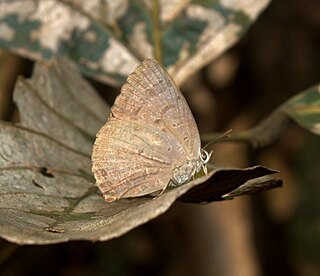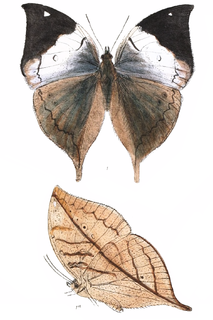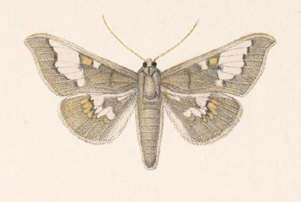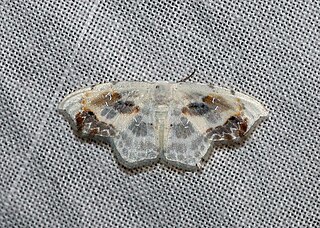
Pseudocoladenia dan, the fulvous pied flat, is an Indomalayan butterfly belonging to the family Hesperiidae found in India to southeast Asia.

Graphium cloanthus, the glassy bluebottle, is a common, non-threatened tropical butterfly of the family Papilionidae.

Parnassius jacquemontii, the keeled Apollo, is a high altitude butterfly which is found in India and Pakistan. It is a member of the snow Apollo genus (Parnassius) of the swallowtail family (Papilionidae). It is also fairly common at high altitudes from Chitral to Kumaon.

Appias lalage, the spot puffin, is a small butterfly of the family Pieridae, that is, the yellows and whites, which is found in India, Indochina and Hainan.

Pontia callidice, the lofty Bath white or peak white, is a small butterfly of the yellows and whites family (Pieridae), which occurs in the Palearctic realm.

Arhopala atrax, the dark broken-band oakblue or Indian oakblue, is a species of lycaenid or blue butterfly found in the Indomalayan realm.

Virachola perse, the large guava blue, is a species of lycaenid or blue butterfly found in the Indomalayan realm. It was described by William Chapman Hewitson in 1863. The larva feeds on Randia dumetorum.

Kallima knyvetti, the scarce blue oakleaf, is a species of leaf mimic butterfly found in Southeast Asia.
Diptilon crassa is a moth of the subfamily Arctiinae. It was described by Hans Zerny in 1912. It is found in Colombia.
Apatelodes quadrata is a moth in the family Bombycidae first described by E. Dukinfield Jones in 1908. It is found in Paraná, Brazil.
Pantographa gorgonalis is a moth in the family Crambidae. It was described by Herbert Druce in 1895. It is found in Guerrero, Mexico.
Phostria cleodalis is a moth in the family Crambidae. It was described by William Schaus in 1920. It is found in Bolivia.
Sameodes furvipicta is a moth in the family Crambidae. It is found in Papua New Guinea.

Siga pyronia is a moth in the family Crambidae first described by Herbert Druce in 1895. It is found in Panama and Costa Rica.
Syllepte tetrathyralis is a moth in the family Crambidae. It was described by George Hampson in 1912. It is found in New Guinea.
Ulopeza denticulalis is a moth in the family Crambidae. It was described by George Hampson in 1912. It is found in South Africa.
Auzata ocellata is a moth in the family Drepanidae. It was described by Warren in 1896. It is found in northern India, northern Myanmar and Fujian in China.

Leucoblepsis renifera is a moth in the family Drepanidae. It was described by Warren in 1900. It is found on Peninsular Malaysia, Sumatra and Borneo.
Spidia planola is a moth in the family Drepanidae. It was described by Watson in 1965. It is found in Ivory Coast and Sierra Leone.
Gonioterma exquisita is a moth in the family Depressariidae. It was described by W. Donald Duckworth in 1964. It is found in Brazil.









